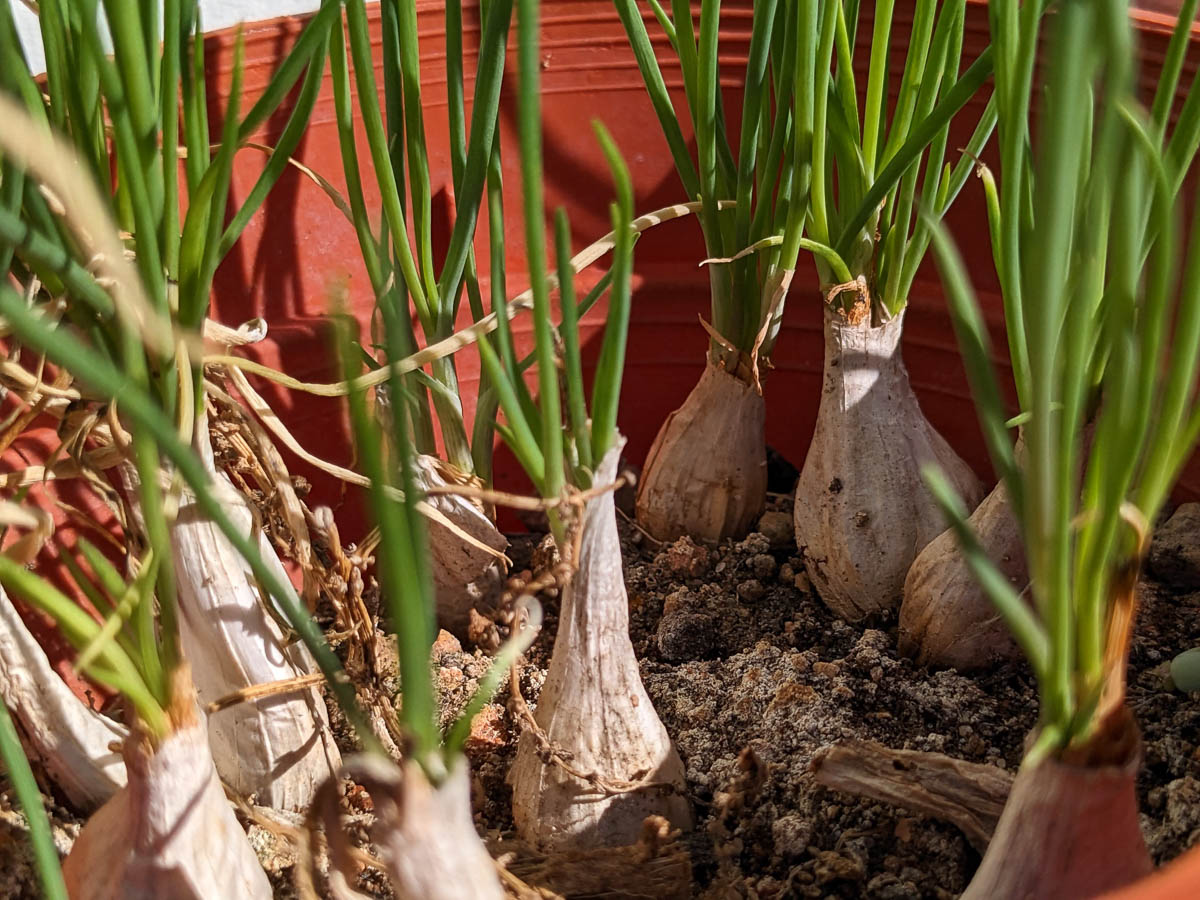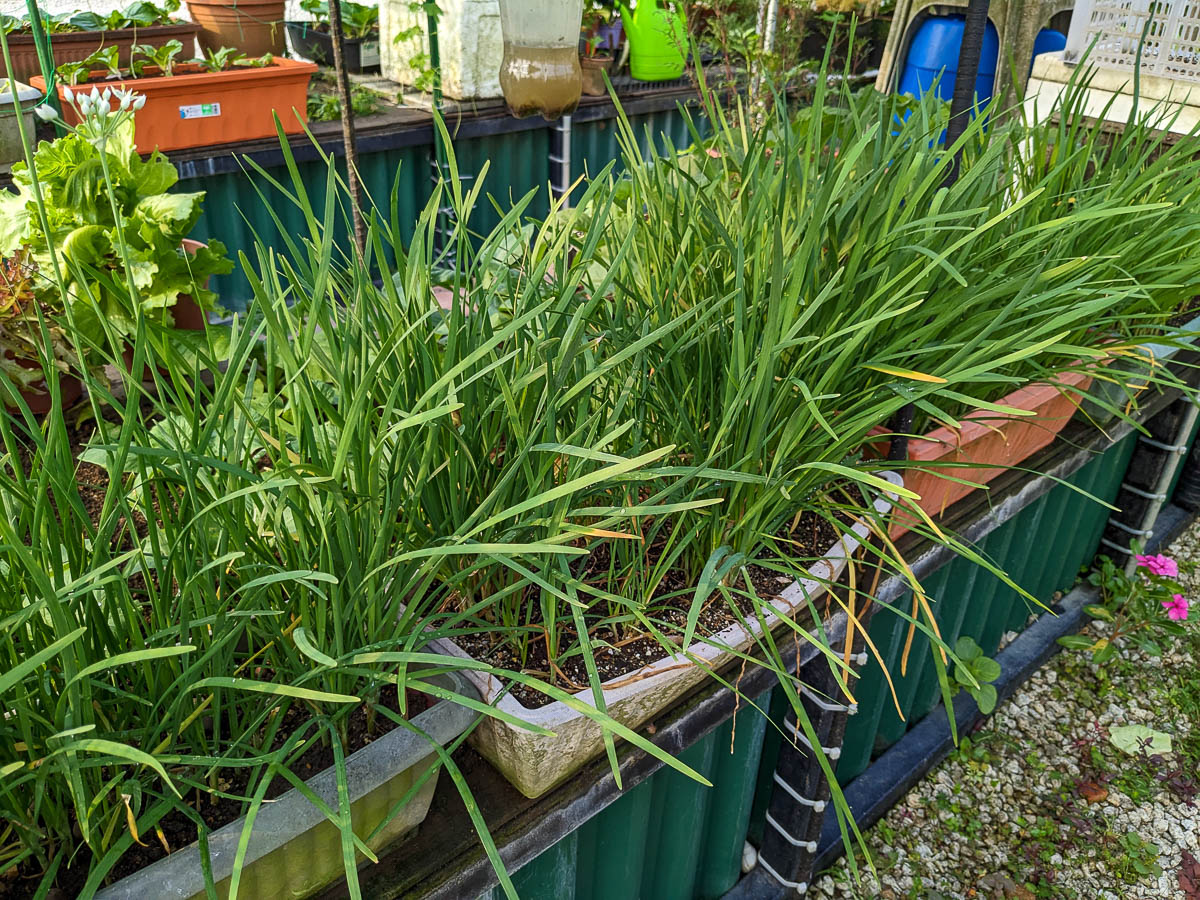Chives
Chives (Allium tuberosum)
Other common names: Garlic Chives, Chinese Leeks, Chinese Chives, Flat Chives, Oriental Garlic, 韭菜

Chives are an easy herb that grows in both semi-shade and full sun gardens. Chives are usually harvested for their leaves, but all parts of the plant generally taste like garlic and can be added to stir-fries, salads, and soups.
A perennial crop with shallow root, chives are a useful addition to any edible garden, and are often planted in containers.
Chives are part of the Amaryllidaceae or onion family, which includes other popular herbs like shallots and leeks.
Sun and soil needs:

As with most herbs, Chives need about 4-6 hours of direct sunlight or 6-8 hours of indirect sunlight. This plant will grow faster in direct sunlight but will tolerate shadier conditions. Plants do best in pots with loamy or sandy soil at least 10cm deep, or in true ground. These plants are vulnerable to root rot, so ensure that your pots drain well, and that your soil has plenty of organic matter to let the roots breathe.
Sowing seeds:
Sow seeds individually in a seedling tray filled with potting mix or seedling mix. Lightly mist the soil until damp, once a day. Seeds should sprout within two weeks.
The seedlings will be vulnerable to high heat and heavy rain and are best kept in a sheltered propagation area or a shaded space with around 4 hours of partial or direct sunlight.
Transplanting:
Seedlings will be ready for transplanting into pots or true ground when they are roughly 10cm tall. Leave 5-10cm between each plant to encourage more growth and better ventilation.
Growing:
Chives grow steadily when there is enough light and water. Regular harvesting and the use of high nitrogen fertilisers will encourage the plant to grow more leaves. Plants can be fertilised once a month after transplanting for a fuller crop.
Harvesting:
Plants can be harvested for leaves at any time, with younger leaves being the most tender. They are typically harvested continuously via the cut-and-come-again method.
.jpg)
If allowed the flower, the young flowers can also be harvested for eating. If the flowers are turn into fruit and produce dry, black seed pods, the seeds can be used to grow another crop.
Propagation:
Chives can be grown from seed or propagated via division.
Common problems & solutions:
Like most strong-smelling herbs, this plant is relatively resistant to pests and disease if kept healthy.
Aphids may infest the plant if it is waterlogged, wilted from heat stress, or is inconsistently watered. Mechanical pest control methods like pruning the infested parts are the best methods for managing these pests.
This plant is especially vulnerable to root rot caused by waterlogging. It is best to grow the plant in loamy or sandy soil with plenty of soil amendments to prevent this.

